Additional notes (click to expand)
Horticulture
Bulbous perennial, with narrow, glaucous leaves, 5-6cm long, with an inverted V-shaped green mark at the tip of each inner tepal, are honey-scented and produced in winter. 10cm high and wide. From Pyrenees to Ukraine. Full hardy.
Grow in humus rich, moist but well-drained soil that does not dry out in summer, in partial shade.
Sow seed of species as soon as ripe in containers in an open frame; keep shaded in summer. Galanthus species hybridize readily in gardens and seed may not come true. Lift and divide clumps of bulbs as soon as the leaves begin to die down after flowering. Prone to narcissus bulb fly and grey mould.
Brickell, C. (2003). A-Z Encyclopedia of Garden Plants. Dorling Kindersley. p.466
Cultivated in Britain since 1598. First recorded growing wild in Britain in the 18th century. Now found all over the UK, rarer in Scotland.
Plantlife Wild Plant & Fungi species database online http://www.plantlife.org.uk/wild_plants/plant_species/snowdrop
link
Never collect this plant from the wild, it is protected under law by CITES (the Convention on International Trade in Endangered Species of Wild Flora and Fauna) due to commercial over-harvesting and habit loss. Most nurseries now avoid the use of bulbs collected from the wild by selling stock raised from artificial propagation of bulb offsets, scale cuttings or seeds.
Galanthus nivalis is a dwarf, bulbous, clump forming perennial found in the moist woodlands and riverbanks of Central and Southern Europe through to Western Asia and the Caucusus. It is not native to the UK but so long cultivated that it has become naturalised here.
It is one of the most popular of all cultivated bulbous plants no doubt because the flowers emerge in winter: delicate droplet-shaped, white tipped with green, often nodding above the snow and with a delicate honey scent. Numerous selected forms and named cultivated varieties are now grown by devotees of the genus who even have their own name: Galanthophiles.
It needs partial shade and humus rich, moist but well-drained soil that does not dry out in summer. A top dressing of leaf mould is recommended.
Galanthus species hybridize readily in gardens and seed may not come true. To increase, lift and divide clumps of bulbs as soon as the leaves begin to die down after flowering.
Jane Knowles 2021
Medicinal
Prescription only medicine: Acetylcholinesterase inhibitors
The chemical galantamine is sourced principally from the Caucasian snowdrop, Galanthus woronowii, but is present in our ‘English’ snowdrop and related species. It is a competitive, reversible, acetylcholinesterase inhibitor that increases brain acetylcholine, a chemical of great importance in cerebral function. As such it has been recommended for ameliorating the symptoms of mild to moderate Alzheimer’s disease, but not for mild cognitive impairment due to increased mortality in US clinical trials.
Some authors have regarded Homer’s ‘moly’ (used by Circe to poison Odysseus’s men) as being this
plant, but 16th-century herbalists (and Linnaeus) were clear that ‘moly’ was an Allium, a member of the onion family. Johnson (Gerard, 1633) calls it the bulbous violet, Viola theophrasti, Leucoium or snowdrop, and says there is no mention of it by ancient writers and that it has no medicinal use. Fuchs (1542) calls it Leucoium theophrasti, known to Pliny, and Viola alba, and concurs that it is of no use. The woodcuts in these herbals are immensely useful in identifying G. nivalis despite its alternative names.
Oakeley, Dr. Henry. (2011). A Year in the Medicinal Garden of the Royal College of Physicians, revised edition. Royal College of Physicians, London. p.11
link
Nomenclature
From Greek- gala, milk and anthos, flower. Nivalis- snow white, growing near snow.
Stearn, W.T. (1996). Dictionary of Plant Names for Gardeners. Cassell. p.147
Other use
Galantamine and its derivatives was approved by the FDA in 2001, and is largely used as a memory-improvement supplement for sufferers of Alzheimers disease and mild dementia. Only recently has the substance been used as an oneirogen, or a dream enhancing supplement.
Historically, the first evidence for using the memory-increasing properties of galantamine come from Homer’s Iliad, where, some scholars argue, Odyessus uses the snowdrop flower to combat the effects of memory loss (Duvoisin, 1983).
This natural supplement has been used for centuries in China as a memory enhancer, and was even noted by the ancient Greeks for its powerful mind-inducing effects.
Although these plants have been used as traditional medicine since ancient times it has only recently become a commercial proposition. In the Odyssey, Homer is thought to have described Odysseus as using the snowdrop to clear his mind. “...The root was black, while the flower was as white as milk; the gods call it Moly...”. Galantamine was first extracted from the snowdrop in the early 1950’s after a Bulgarian pharmacologist saw remote villagers rubbing their forehead with the plant leaves and bulbs. It was first officially approved for use as a drug in Bulgaria in 19582.
Joint Nature Conservation Committee http://jncc.defra.gov.uk/page-5721-theme=textonly
link
Phytochemistry
Galantamine is an alkaloid known form several members of the Amaryllis family (Amaryllidaceae), and the idea for developing a medical product for AD from these species seems to be based on the local use of one of these species in a remote part of Europe. It has become an important therapeutic options used to slow down the process of neurological degeneration in AD. Its development from little known observational studies in the Caucasus Mountains (Southern Russia), to the use of this drug in Eastern European countries (esp. Bulgaria) in the treatment of poliomyelitis and ultimately to the recent introduction onto Western markets in the treatment of AD (Heinrich, 2010). Galantamine was first isolated from snowdrop (Galanthus spp.) but today it is obtained from Narcissus spp. and Leucojum spp. as well as synthetically (Heinrich and Lee Teoh, 2004). According to unconfirmed reports, in the 1950s, a Bulgarian pharmacologist noticed the use of the common snowdrop growing in the wild by people who were rubbing it on their foreheads to ease nerve pain. Also, some of the earlier publications indicate the extensive use of snowdrop in Eastern Europe, such as Romania, Ukraine, the Balkan Peninsula, and in the Eastern Mediterranean countries. However, Mashkovsky and Kruglikova-Lvov (1951) published the first work that establishes the acetylcholine esterase inhibiting properties of galantamine isolated from Galanthus woronowii. Poliomyelitis was one of the first indications for galantamine, especially in the Eastern and Central European, since the compound enhances nerve impulse transmission at the synapse. Studies indicating blood–brain barrier penetration of the alkaloid pioneer the development of CNS-related indications. Based on the knowledge of galantamine in both the peripheral and central nervous system, many countries in Eastern Europe used it as an acknowledged treatment in Myasthenia gravis and muscular dystrophy, residual poliomyelitis paralysis symptoms, trigeminal neurologica, and other forms of neuritis. A crucial step for the success of galantamine as a medicine against AD was based on the synthesis developed in the mid-1990s. The scientific rationale for using cholinesterase inhibitors in the management of AD is based on the cholinergic hypothesis. Impairment of the central cholinergic system represents one hallmark of AD, which is characterized by loss of cholinergic neurons in the forebrain and a marked decrease in the activity of choline acetyltransferase. Overall, galantamine represents an example for the successful ethnobotany-driven development of a natural product into a clinically important drug (Heinrich, 2010).
In the last years, focus on AD drug discovery is shifting away from AChE inhibitors and a large number of other targets are currently being explored.
However, mounting evidence obtained in vitro and in vivo, suggests that various traditionally used plants significantly affect key metabolic alterations culminating in AD-typical neurodegeneration. While the impact of the aforementioned traditional used plants on AD has been reviewed comprehensively (Howes et al., 2003; Houghton and Howes, 2005; Akhondzadeh and Abbasi, 2006; Yan et al., 2007).
Joint Nature Conservation Committee http://jncc.defra.gov.uk/page-5721-theme=textonly
link
Toxicity
Toxic
Professor Anthony Dayan, 2022
Geographical distribution
- Asia-Temperate, Caucasus
- Asia-Temperate, Western Asia, Turkey
- Europe, Eastern Europe, Ukraine
- Europe, Middle Europe, Austria
- Europe, Middle Europe, Czech Republic
- Europe, Middle Europe, Germany
- Europe, Middle Europe, Germany
- Europe, Middle Europe, Hungary
- Europe, Middle Europe, Poland
- Europe, Middle Europe, Switzerland
- Europe, Southeastern Europe, Albania
- Europe, Southeastern Europe, Bulgaria
- Europe, Southeastern Europe, Greece
- Europe, Southeastern Europe, Italy
- Europe, Southeastern Europe, Yugoslavia
- Europe, Southwestern Europe, France
- Europe, Southwestern Europe, Spain
Podcast
Galanthus nivalis L.
Family: AMARYLLIDACEAEGenus: Galanthus
Species: nivalis L.
Common names: Snowdrop
Distribution summary: Mid to S.Europe, W. Asia, Caucasus
Habit: Perennial
Hardiness: H5 - Hardy; cold winter
Habitat: Moist woodland and riverbanks
Garden status: Currently grown
Garden location: Poisons garden (PETO), Plants of the World (C), Mulberry Tree bed (H), Top of lawn by 'Sundial' (S)
Flowering months: January, February, March
Reason for growing: Medicinal, toxic, prescription only medicine
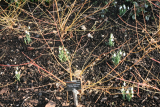
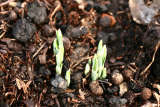

.JPG)
.JPG)
.JPG)
.JPG)
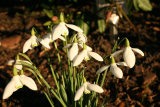
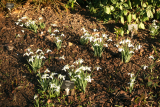
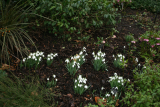
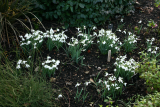
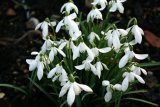
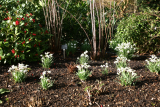


.JPG)
.JPG)
.JPG)
.JPG)
 double form .JPG)
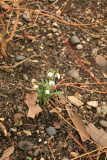
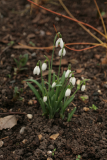
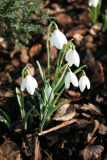
.JPG)
.JPG)
.JPG)
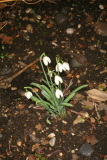
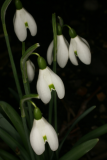


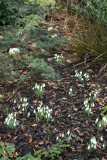
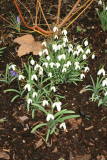
.JPG)
.JPG)
.JPG)